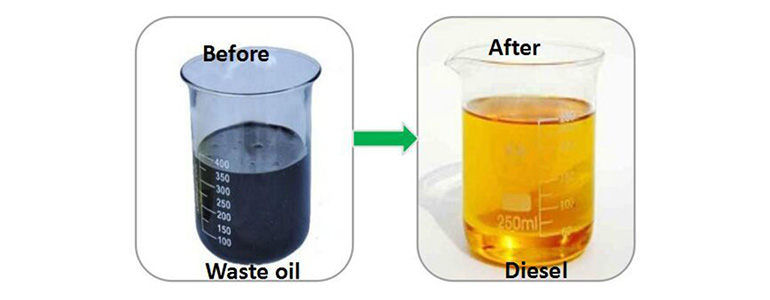Biodiesel is a renewable fuel made from biomass. Most U.S. biodiesel is produced from vegetable oils and animal fats. Biodiesel can be used in the same equipment as diesel fuel made from petroleum.

The major sources of feedstock (raw material) for making biodiesel in the United States and their shares of total biodiesel feedstocks in 2017 were
Soybean oil—52%
Canola oil—13%
Corn oil—13%
Recycled feedstocks, such as used cooking oils and yellow grease—12%
Animal fats—10%
Biodiesel is most often blended with petroleum diesel in ratios of 2% (referred to as B2), 5% (B5), or 20% (B20). Biodiesel can also be used as pure biodiesel (B100). Biodiesel fuels can be used in regular diesel engines without making any changes to the engines. Biodiesel blends are also used as heating oil. Biodiesel can be stored and transported using petroleum diesel fuel tanks and equipment.
Before petroleum diesel fuel became popular, Rudolf Diesel, the inventor of the diesel engine in 1897, experimented with using vegetable oil (biodiesel) as fuel. Until 2001, only small amounts of biodiesel were consumed in the United States. Since then, biodiesel consumption has increased substantially, largely because of the availability of various government incentives and requirements to produce, sell, and use biodiesel.
Contents
Biodiesel burns much cleaner than petroleum diesel
Biodiesel is nontoxic and biodegradable. Compared to petroleum diesel fuel, which is refined from crude oil, biodiesel combustion produces fewer air pollutants such as particulates, carbon monoxide, sulfur dioxide, hydrocarbons, and air toxics. Nitrogen oxide emissions from burning a gallon of biodiesel may be slightly higher than emissions from burning a gallon of petroleum diesel.
Biodiesel use may reduce greenhouse gas emissions
The U.S. government considers biodiesel to be carbon-neutral because the plants that are the sources of the feedstocks for making biodiesel, such as soybeans and palm oil trees, absorb carbon dioxide (CO2) as they grow. The absorption of CO2 by these plants offsets the CO2 that forms while making and burning biodiesel. Most of the biodiesel produced in the United States is made from soybean oil. Some biodiesel is also produced from used vegetable oils or animal fats, including recycled restaurant oil and grease.
In some parts of the world, large areas of natural vegetation and forests have been cleared and burned to grow soybeans and palm oil trees to make biodiesel. The negative environmental effects of this land clearing and burning may be greater than the potential benefits of using biodiesel produced from soybeans and palm oil trees.